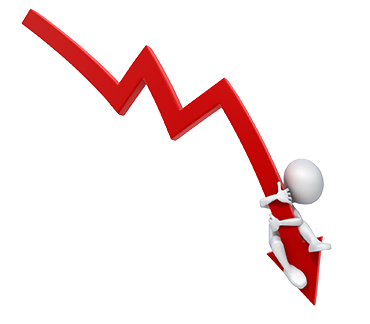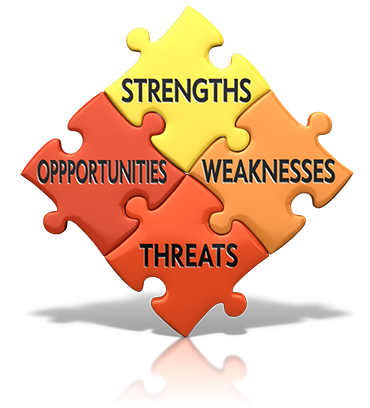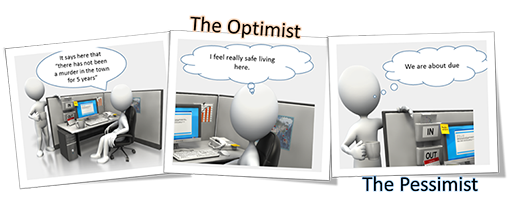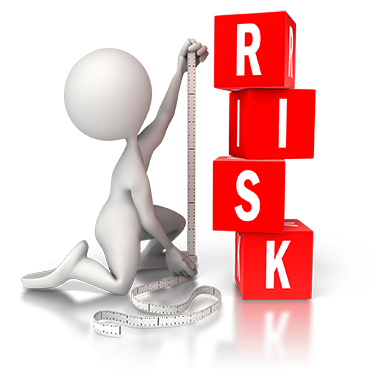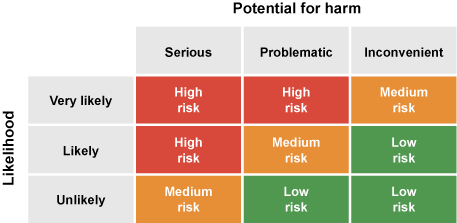Use 'Print preview' to check the number of pages and printer settings.
Print functionality varies between browsers.
Printable page generated Thursday, 25 April 2024, 10:28 PM
Succeeding in a small business
Introduction
Welcome to the Starting your small business course where you will look at what it takes to make a business succeed. This section will take approximately three hours to complete.
Once completed you will have the opportunity to obtain the ‘Succeeding in a small business’ badge. In this section, you will:
- look at what success means
- look at why businesses fail
- explore some common things in successful businesses
- apply these ideas to real life situations
- establish some ideas that can help your business succeed.
To help you along the way, there are a number of activities where you reflect on what you have been learning within this section, and how you can apply these new skills and knowledge in practice.
Learning outcomes
By completing this section and the associated quiz, you will be able to:
describe common reasons small businesses fail
identify areas of risk for a given business.
1 What is success?
As a small business owner, you start your business for it to be successful, but what do we mean by ‘successful’? In this activity we will explore definitions of ‘success’.
According to Oxford Dictionaries, ‘success’ is:
- the accomplishment of an aim or purpose
- the attainment of fame, wealth or social status.
Activity 1
Write down as many outcomes as possible that could be classed as successful outcomes for a business. For each outcome give an example of a business that you feel would class that outcome as a success.
Aim for at least five outcomes and then click ‘save and reveal comment’to see our suggestions.
Comment
Here are some overarching ideas we thought of:
- making a net profit – a window cleaning business
- providing goods at a low price to families – a local food bank
- generating money to be used for charitable purposes – an Oxfam shop
- employing a workforce – a resettlement service
- a high turnover of staff – a business training and developing entrepreneurs
- paying a higher price for raw materials – CafeDirect, a fair trade business
- growing capital assets – a property business to be used for retirement
- bring in enough money to operate whilst paying most staff nothing – a dogs home run with volunteers
- working two days a week and bringing in enough money – someone wanting a better work life balance.
So are we saying that you should not focus on profit? Not at all, for most businesses there will be a need to generate a certain level of income, but the success or the feeling of success may not be entirely focused on that.
Success could be defined as ‘meeting the objectives of the business’, these could be financial, ethical, lifestyle or philanthropic.
Activity 2
Consider the five case studies and use the table below to suggest what each of the owner’s might consider success to be. (To open the case study in a new tab on a PC, hold down the Ctrl key when clicking.)
| Business | Examples of success for each business |
| Bike-a-lot | |
| Mucky Pets | |
| JJ Components | |
| Red Bush Brewery | |
| Turn-it-round |
Comment
If we take ‘generation of income’ as a standard across the five, then the sorts of things that could be classed as success are:
| Business | Examples of success for each business |
| Bike-a-lot | Spending the working day based on a hobby. |
| Mucky Pets | Move from minimum wage job into something more financially rewarding. |
| JJ Components | Getting the full reward for innovation and being able to solve problems. |
| Red Bush | Provide an alternative income for the farm at a time of uncertainty in the farming industry. |
| Turn-it-round | Giving ex-prisoners a better chance at meaningful employment. |
We do not expect your answers to match exactly, but there should be some similarities between these answers and yours.
2 Why do small businesses fail?
David Mellor presented a number of reasons and ‘top tips’ to prevent business failure.
Using some ideas from David Mellor of the Guardian (2015) and Patricia Schaefer of Business-know-how (2001), we came up with ten reasons why small businesses fail:
- Not fully understanding what they are letting themselves in for
- Getting paid and bad debts/lack of capital/lack of liquidity
- Choosing the wrong business partner(s) to help grow the business
- Starting a business for the wrong reasons
- Poor management
- Insufficient capital
- Location
- Lack of planning
- Overexpansion
- Lack of website.
Let’s look at the ten reasons why small businesses fail in a little more detail.
2.1 Lack of preparation
Not fully understanding what they are letting themselves in for
Underestimating the time and commitment required and the responsibilities of owning a small business is a recipe for failure and opens up pitfalls along the way. This suggests that there was a lack of research done before setting up the business.
Starting a business for the wrong reasons
In Section 1 we talked about the things that can be gained from running your own business; independence, time with the family, reward for your effort. These are true, but these are considerations when running a business, not the main reason. The combination of a good business idea, the suitable market and the skills to run the business should be the reasons.
Choosing the wrong business partner(s) to help grow the business
When working with others there is a potential for partners to have different agendas and objectives. Dishonesty is a risk between partners, but even totally honest partners can have unrecognised differences or expectations that could lead to problems.
Insufficient capital
Underestimating how much money is needed to start up or last till the first invoices are paid can be fatal for a new business.
Lack of planning
Significant and thorough planning is essential. The business planning process helps to identify where the peaks and troughs will be and what investment is required and when.
2.2 Lack of business skill
Getting paid and bad debts/lack of capital/lack of liquidity
Getting the work is one thing, getting paid for it at a suitable rate for the time spent is another. The ability to negotiate a contract and then collect the money owed is an essential business skill. Not balancing the payments and income correctly could lead to cash flow problems. Insufficient cash to pay debts is the main reason small businesses fail.
2.3 Poor choices
Location
A great idea started in the wrong place is destined to fail.
The wrong place could be:
- too close to the competition
- too far from the customers
- too expensive.
Overexpansion
Being successful does not automatically mean that expansion is the right thing. The timing of the expansion and the reduction of risk are considerations. Of course businesses want to grow, but the customer base might not support the growth and the associated costs.
Lack of website
Simply put, if you have a business today, you need a website. Unless totally reliant on local customers found through word of mouth, every business should have a professional looking website that enables potential customers to find out about their products and services. The majority of customers use the internet as a key part of their search for services. By not having a website, the business is excluding itself from potential customers.
2.4 Applying this to Bike-a-lot
Activity 3
Let’s take the case of Bike-a-lot. (To open the case study in a new tab on a PC, hold down the Ctrl key when clicking.) Based on these ten points where do you think the potential failures are for the owner Nicky?
Comment
Nicky decided to start Bike-a-lot with a partner to spend more time on the hobby of riding motor cycles. There is a danger that this passion could turn sour and the hobby becomes a chore.
Having a partner in the business means that there is potential for different priorities and levels of effort.
The bike school must be located where people want to ride, can get to and not too close to other bike schools. The customer base is not that large that two schools close together could be supported.
Because the partners had to take out a substantial loan, they had to present a robust business case to the bank, this gave some confidence that the business was viable.
The Bike-a-lot website is one of its strengths. Hosted and run by a local IT company the website is easy to navigate and allows for online booking with all payments taken in advance.
Nicky has to plan carefully. People avoid learning to ride motor cycles in the winter months, so there will be times of very low income in December, January and February. Contingencies need to be in place for these periods. Perhaps the business could focus on selling bikes and equipment or carrying out winter services when owners are less likely to use their motor cycles.
3 Risk assessment
We always like to think that things are going to go well, but we need to accept that that is not always the case. A risk assessment should be one of the activities carried out right at the start of the business planning process.
Risk assessment is a term we often associate with health and safety, but the same principles can be applied to running a small business. There are many project management courses which focus on risk assessment and risk management.
The basic principles of risk assessment are:
- a hazard – something that could cause problems of some sort
- potential for harm – what would be the consequences if this happened
- likelihood – how likely is it that this would happen.
Or, put simply: ‘What is the worst that could happen? What are the chances?’.
3.1 Measuring the risk
To carry out a simple business risk assessment we will use these options:
Potential for harm
- Serious – could shut the business down or prevent it starting up.
- Problematic – could restrict activities or profit to a significant degree.
- Inconvenient – only a minor impact, more of an inconvenience.
Likelihood
- Very likely – almost certain to happen.
- Likely – fairly likely to happen, the business would be considered fairly lucky if this did not happen.
- Unlikely – not really expected to happen, the business would be considered unlucky if this happened.
Conventionally this presented as a 3×3 matrix that allows for the highest risks to be identified (Figure 12).
The business owner should identify the various hazards and then decide on the relative potential for harm and likelihood for each. The matrix can be used to identify the risk. All hazards that come out as ‘high risk’ or ‘medium risk’ should have something put in place for when/if they happen.
We are keeping our definitions simple using just high risk, medium risk and low risk, in some instances these categories are broken down much further.
3.2 Risk management in practice
Now let’s look at this in practice using Mucky Pets. (To open the case study in a new tab on a PC, hold down the Ctrl key when clicking.) There are five steps to follow – you can tackle the first four in Activity 4.
Activity 4
3.3 Manage the high risks
The final step is to put something in place to deal with the high and medium risks. This is having a ‘plan B’ and enables a reaction to things going wrong to be planned and considered rather than a knee jerk reaction.
Activity 5
4 Tips for success
So what can be done to not only avoid failure, but improve the chances of success? Watch this short video (3:26) from the TED Talks series, where Richard St. John talks about the ‘8 secrets of success’.
Transcript
[MUSIC PLAYING]
[CLAPPING]
[LAUGHTER]
[LAUGHTER]
[APPLAUSE]
[MUSIC PLAYING]
St. John bases his eight suggestions on interviews with successful business people.
David Mellor, a business mentor, has five top tips for success – these are summarised in Table 1.
| Information |
|
| Plan B |
|
| Cash is king |
|
| Putting all your eggs in one basket |
|
| Values |
|
Footnotes
(Mellor, 2014)Activity 6
Now we take these ideas and look at how they apply to one of the case studies.
Think about Red Bush Brewery. (To open the case study in a new tab on a PC, hold down the Ctrl key when clicking.) What advice would you give owner Sam, based on the comments from St. John and Mellor that will increase the chances of success? You do not need to cover all the points, just those you feel are relevant.
Comment
Here are our thoughts:
Sam needs to make sure that there are the right skills in the business. Red Bush Brewery must have a good brewer making the beer. Sam also needs to develop skills in brewing, there is a high risk that the person employed as the master brewer could leave, so by developing the skills himself, Sam could mitigate this risk.
Sam needs to have a plan B, what would happen if the brewery does not turn the required profit? Are there alternatives? Could the brewery be used as a teaching or experience for customers?
Sam needs to have a range of outlets for the beer, avoiding selling through just one local store.
Sam needs to realise that setting up a brewery is hard work and will take time to establish and build a reputation. When planning, Sam needs to allow time for this to take place and to stick with the idea if it struggles at first.
5 Your business
You may now like to take the ideas discussed so far and link them to your own business idea. You can do this through two activities:
- Activity 6: Create your own business case study in a similar format to the example case studies.
- Activity 7: Answer the questions for the case study you created.
Activity 6
Creating your own personal case study
Complete the case study information for a business you have recently started, are thinking of starting or have knowledge of through friends or family.
| Name of business | |
| Brief description of business and its objectives | |
| Staffing of business | |
| Business assets | |
| Essential skills | |
| Mandatory licences or insurance arrangements | |
| Expected turnover for year 1, year 2 and year 3 |
To get the most out of this course we encourage you to keep notes on the ideas you have and the activities you complete. These notes could be very useful as you move your business idea along.
This particular activity is also used in the other sections of this course and may have already been completed. It is suggested that you use the same ideas for each section, though you may wish to change or develop your ideas as you go through the different sections.
Activity 7
- Write down what you think success looks like for your business idea? How will this success be measured? (Remember not to only mention profit.)
- Which of the following could apply to you and your business ideas and what can you do to avoid them?
- Not carrying out enough research into your business idea, the customers and the competition
- Not fully understanding what you are letting yourself in for
- Getting paid and bad debts/lack of capital/lack of liquidity
- Choosing the wrong business partner(s) to help grow the business
- Starting a business for the wrong reasons
- Poor management
- Insufficient capital
- Location
- Lack of planning
- Overexpansion
- Lack of website.
- What are the three biggest risks to your business idea and what can you do to mitigate for them?
- If you were employed as a consultant to advise on your business idea, what advice would you give to help improve the chance of success? Write this in the form of a series of bullet points.
6 Personal reflection
Having completed this first section we suggest you take a few minutes to reflect on what you have learned so far. You may want to save your answers in this activity (and others in this section) in a separate document for use after the course.
Activity 8
7 What you have learned in this section
- Success means different things to different people.
- There are lots of reasons why small businesses fail, and a lot of them are predictable.
- Through risk assessment it is possible to identify the medium and high risk aspects of a business and to make plans for if and when they occur.
- Six common success indicators.
- Five tops tips for making a success of your small business.
Section 4 quiz
Well done, you have now reached the end of Section 4 of Starting your small business, and it is time to attempt the assessment questions. This is designed to be a fun activity to help consolidate your learning.
There are only five questions, and if you get at least four correct answers you will be able to download your badge for the ‘Succeeding in a small business’ section (plus you get more than one try!).
- I would like to try the Section 4 quiz to get my badge.
If you are studying this course using one of the alternative formats, please note that you will need to go online to take this quiz.
I’ve finished this section. What next?
You can now choose to move on to Taking my learning further where you can reflect on what you have learned, obtain your Statement of Participation for the course and find suggestions of other places you might like to visit.
If you have not done so already, you might like to visit one of the other sections so you can continue collecting your badges.
We would love to know what you thought of the course and how you plan to use what you have learned. Your feedback is anonymous and will help us to improve our offer.
- Take our Open University end-of-course survey.
References
Acknowledgements
Except for third party materials and otherwise stated in the acknowledgements section, this content is made available under a Creative Commons Attribution-NonCommercial-ShareAlike 4.0 Licence.
The material acknowledged below is Proprietary and used under licence (not subject to Creative Commons Licence). Grateful acknowledgement is made to the following sources for permission to reproduce material in this unit:
Figures
Figures 1–14: courtesy Moore Effective Solutions Ltd.
Tables
Table 1: adapted from Mellor, D. (2014) ‘The top reasons why small businesses fail, and what you can do about it’, The Guardian, 28 August [Online]. Available at: http://www.theguardian.com/ small-business-network/ 2014/ oct/ 28/ top-reasons-small-businesses-fail.
AV material
Section 4: TED Talk by Richard St. John and transcript © TED Talks LLC. https://creativecommons.org/ licenses/ by-nc-nd/ 3.0/
Every effort has been made to contact copyright owners. If any have been inadvertently overlooked, the publishers will be pleased to make the necessary arrangements at the first opportunity.
Glossary
- cash flow
- This is the actual movement of cash into and out of a business. It does not include money owed, only money paid.
- lack of liquidity
- This exists when a business has insufficient liquid assets (cash or stock) to meet its immediate obligations.
- liquidity
- Accounting liquidity measures the ease with which a business can meet its financial obligations with the liquid assets available to them.
- philanthropic
- Charitable giving to human causes on a large scale. Philanthropy must be more than just a charitable donation; it is an effort undertaken by an individual or organisation based on an altruistic desire to improve human welfare. Wealthy individuals sometimes establish foundations to facilitate their philanthropic efforts.


